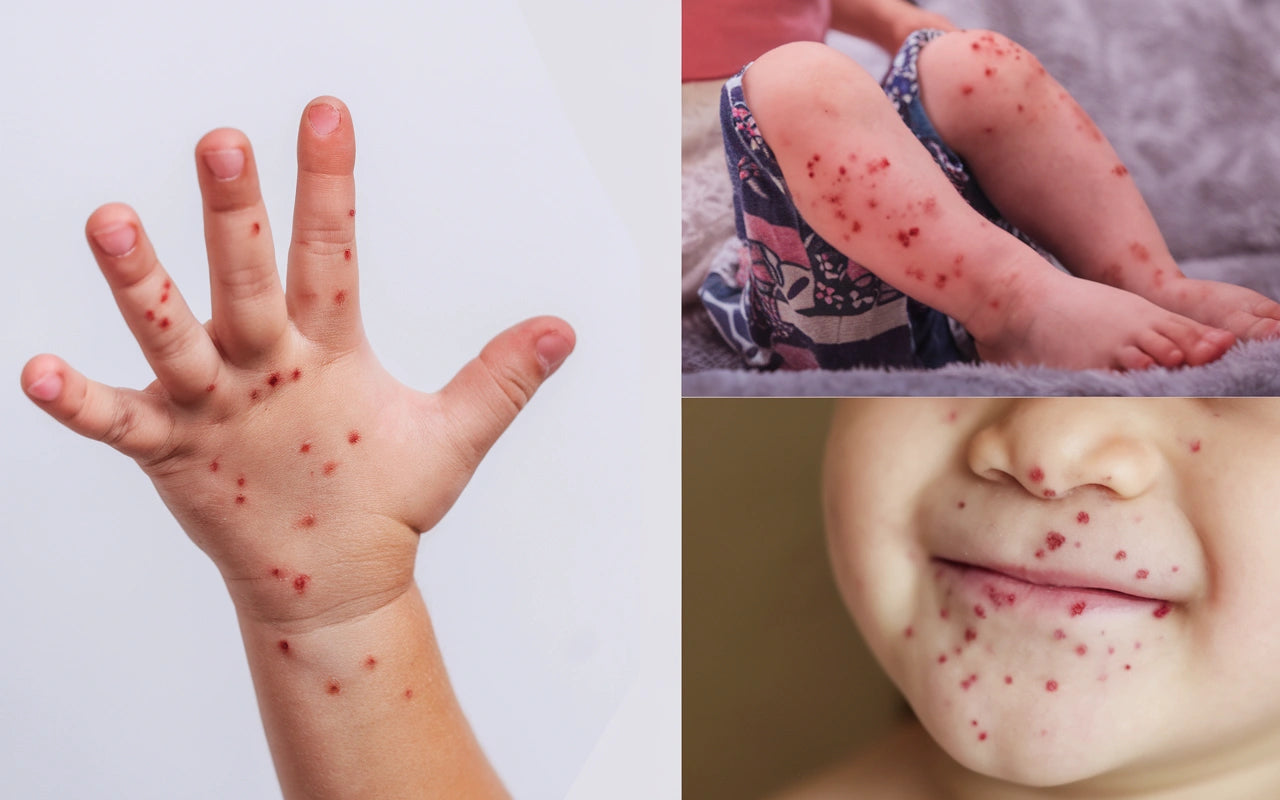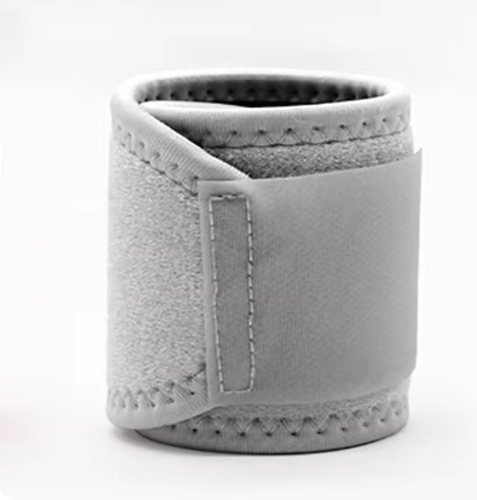Hand, Foot, and Mouth Disease: Symptoms, Causes & Treatment

Hand, foot, and mouth disease, also known as cold sores, is a common viral illness that primarily affects children but can also occur in adults. This article reviews the most common symptoms, causes, and treatment options for cold sores.
What are cold sores? Definition and why children and adults get cold sores
Fall blisters are painful blisters that can occur during the fall, often due to moisture, cold temperatures , and friction. Proper skin care and protective treatment can help relieve the discomfort and prevent further irritation.
Fall fever is actually a viral infection that mainly occurs during late summer and autumn, which is why it is called that. It is especially common for children under 10 to be affected when they start preschool or school after the summer holidays. The disease is also called hand, foot and mouth disease because of the areas where the blisters usually appear.
Symptoms of fall blisters: Common signs and symptoms of fall blisters
Cold sores can manifest themselves in several ways and the symptoms can vary between children and adults:
- Fever: Often the first symptom, especially in children.
- Mouth blisters: Painful blisters on the tongue, gums, and inside of the cheeks.
- Rash on hands and feet: Small red dots that develop into blisters.
- Sore throat: Can make eating and drinking difficult.
- Fatigue and irritability: Especially common in young children.
- Headache: More common in adults.
Children with cold sores often complain of a sore mouth and may have difficulty eating and drinking. The small blisters on the hands and feet may also be tender, a sensation that is sometimes reminiscent of tingling in the hands and feet . Cold sore symptoms in adults may be milder or absent altogether, but when they do occur, they are similar to those in children. Adults often have a sore throat and a more general feeling of illness, while the blisters may be less pronounced.
Causes of cold sores: What causes cold sores and how they are transmitted
Chickenpox is caused by various types of enteroviruses, mainly coxsackievirus. The disease is spread by:
- Direct contact with an infected person's saliva, nasal secretions, or feces.
- Touching contaminated surfaces or objects.
- Droplet infection from coughing and sneezing.
Chickenpox infection spreads easily in environments where many children gather, such as preschools and schools. The infection is greatest during the first days of the illness, often before symptoms are fully developed. This means that the virus can be spread unconsciously. Chickenpox infection in adults occurs in the same way as in children, but adults often have better hand hygiene, which can reduce the risk of infection.
Diagnosis and treatment of autumn blisters
Chickenpox is a common viral infection that most often affects children but can also occur in adults. The infection is caused by the coxsackievirus and causes small blisters in the mouth, hands and feet. The disease usually goes away on its own, but treatment is aimed at relieving symptoms and preventing dehydration.
Rest and fluids
Since cold sores are caused by a virus, there is no specific medicine that can cure the disease. The body needs rest and enough fluids to recover. Drinking plenty of fluids and avoiding acidic or spicy foods can reduce the discomfort in the mouth.
Pain relief
If necessary, over-the-counter medications such as paracetamol or ibuprofen can be used to relieve fever and pain. In children, it is important to follow the recommended dosage. Pain relief can make it easier to eat and drink during the illness.
Mouthwash
Rinsing or gargling with mild solutions can relieve burning and pain in the mouth. It also helps keep the area clean and reduces the risk of secondary infections.
Good hygiene
Because cold sores are highly contagious, good hand hygiene is essential. Wash your hands thoroughly, especially after using the toilet and before eating, to prevent spread. Avoid close contact with others during the illness.
When to seek care
Cold sores usually go away within 7–10 days. Seek medical attention if your child has a high fever, signs of dehydration, or difficulty swallowing. In adults, seek medical attention if symptoms do not improve within a week or if the blisters spread.

How Wrist Brace Can Help With Fall Blisters: Support to Reduce Pain and Discomfort
Although the Wrist Support from Komforten does not directly treat fall blisters, it can offer several benefits for people affected by the condition:
- Provides support and relief to the hands, which can be especially comfortable when you have blisters on your hands.
- Can help reduce accidental touching of the face, which can reduce the risk of spreading the virus.
- Improves ergonomics when working on a computer or other activities, which can be welcome when you feel tired and sluggish.
- Can be used as a reminder to maintain good hand hygiene.
For people with painful blisters on their hands, a wrist brace can reduce discomfort when using their hands for everyday activities or work. It is especially useful for adults who may need to continue working despite an infection with milder symptoms .
Buy nowConclusion
Chickenpox is a common and usually harmless viral disease that affects both children and adults. Although there is no specific treatment, the disease usually resolves on its own within a week. Good hygiene and symptom relief are key to managing the disease. Using supportive products such as Wrist Support can help increase comfort during the illness.
Cold sores rarely require medical treatment, but it is important to be aware of complications such as dehydration, especially in young children. Sores from ruptured blisters can be painful but usually heal without scarring. With proper care and good hygiene, you can reduce discomfort and prevent the infection from spreading to others.
Frequently Asked Questions (FAQ)
How long are you contagious with chickenpox?
People are most contagious during the first few days of the illness, often before symptoms have fully developed.
Can adults get chickenpox from children?
Yes, adults can be infected by children, especially if they have not had the disease before.
How do the symptoms differ between children and adults?
Adults often have milder symptoms and may sometimes be completely symptom-free. Children more often have fever and more pronounced blisters.
Can you get chickenpox more than once?
Yes, but subsequent infections are often milder as the body has developed some immunity.
Is surgery ever necessary for gamnacke?
Surgery is rarely necessary for scoliosis. Most cases can be treated effectively with conservative methods and lifestyle changes.

